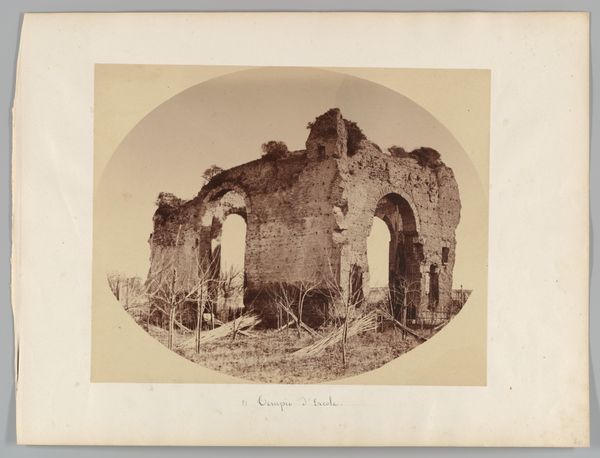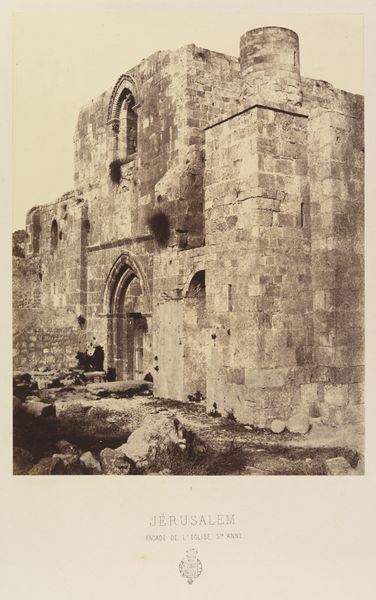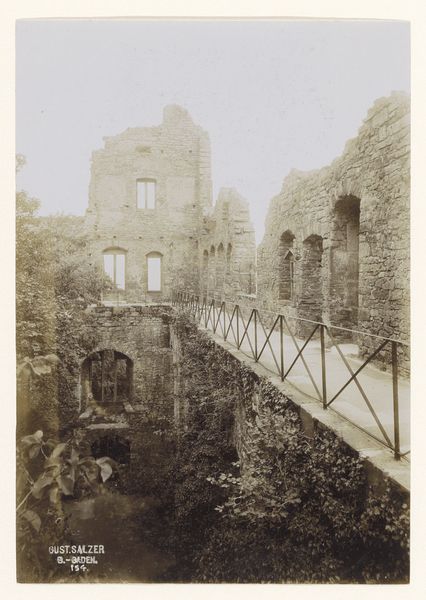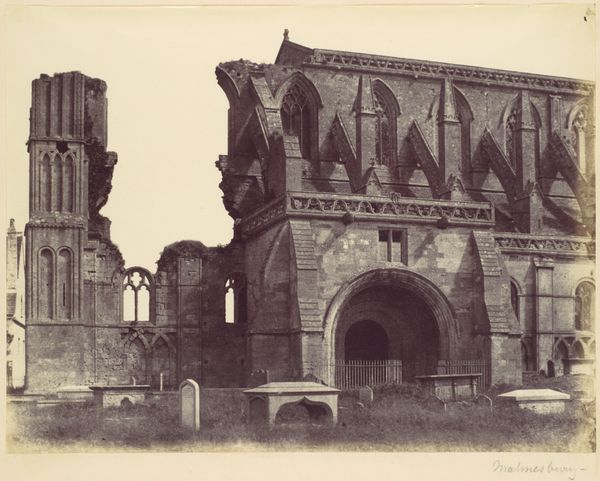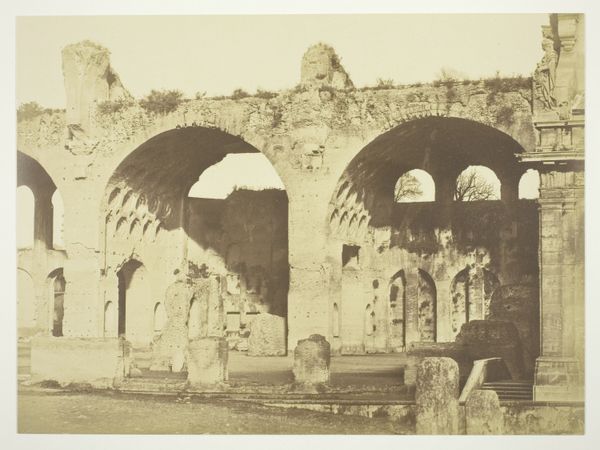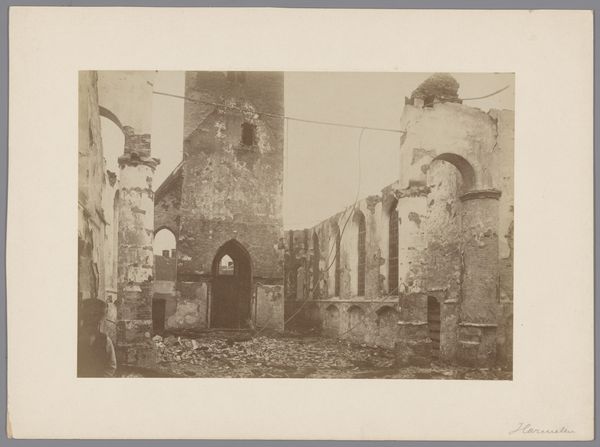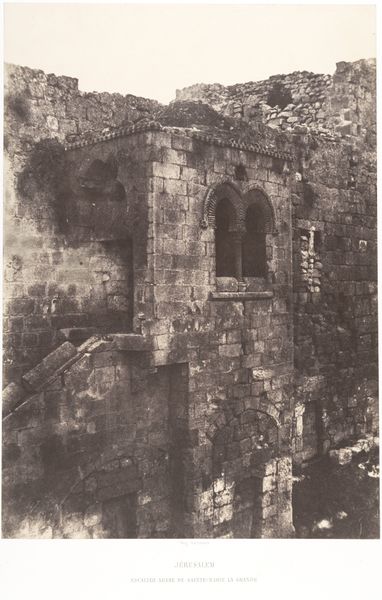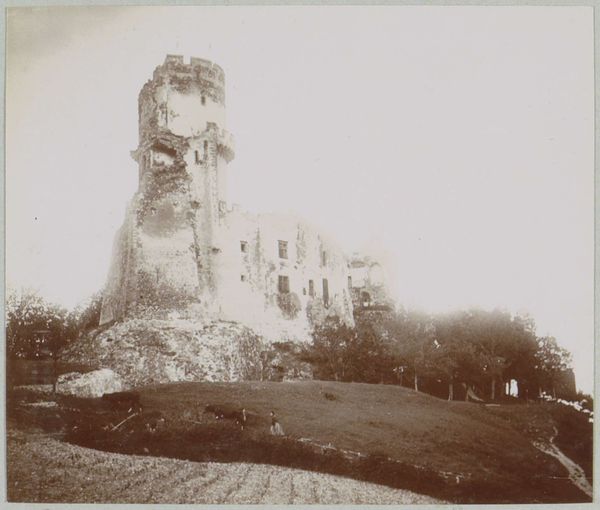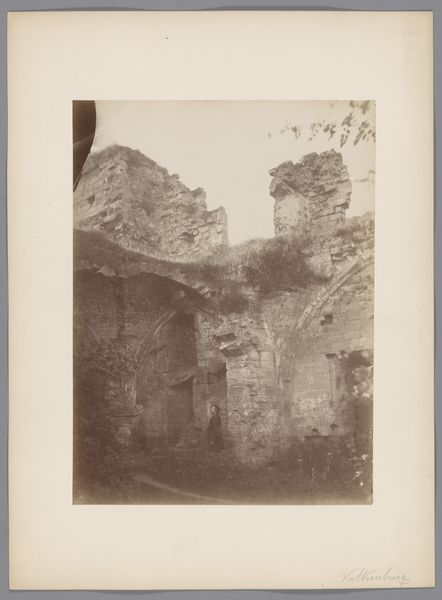
The Tomb of Sir Walter Scott, in Dryburgh Abbey 1844
0:00
0:00
#
grey hue
#
black and white photography
#
eerie mood
#
fairytale
#
monochrome photography
#
gloomy
#
graveyard
#
murky
#
mist
#
shadow overcast
Dimensions: 16.8 x 17.9 cm (6 5/8 x 7 1/16 in. )
Copyright: Public Domain
Curator: This haunting photograph is entitled "The Tomb of Sir Walter Scott, in Dryburgh Abbey." It's an 1844 print by William Henry Fox Talbot, a pioneer of photography. Editor: Haunting is right. It's incredibly atmospheric, almost ghostly. The light seems to seep through the crumbling abbey, giving it an ethereal, yet melancholy feel. Curator: Talbot's process, the calotype, was revolutionary, producing a soft, almost painterly image. The social impact of easily reproducible images started right here. And consider Dryburgh Abbey. It wasn’t merely a backdrop. Scott chose to be buried here; it became a site of literary pilgrimage. This image transformed a personal site into a publicly accessible symbol. Editor: It’s interesting you mention accessibility, because looking at this now, through a contemporary lens, I think about the romanticization of ruins, particularly in relation to colonial power and decay. Talbot, likely unintentionally, captured that tension. The decaying abbey can be seen as a monument not just to Scott, but to a certain kind of power, the legacies, and the power structures that upheld it. What was the role of Sir Walter Scott and his literary project? And how were those projects used and abused to promote ideas of nation, race and even colonialism? Curator: That is a fascinating, if difficult, point. Indeed, Scott was a towering figure in shaping Scottish identity, but you’re right; that influence needs interrogation. How the past is visually presented, like here, profoundly shapes national narratives and collective memory. The Abbey, photographed here, almost serves as a romantic tableau of a national author at rest, a scene of natural decay that perhaps mirrors a nostalgia for older social hierarchies. Editor: Exactly. And thinking about the image's afterlife—how was this photography consumed? What kind of social reality was built around viewing something like this? It's crucial to ask who benefitted and what got reinforced? What values are encoded, and how those impact people now. The "eerie mood," is loaded. Curator: Certainly. Talbot probably had other ideas, but his choice of subject and his unique process contributed to a broader visual language and dialogue about Britain's self-image at the time. Art inevitably reflects social realities, sometimes despite the artists' intentions. The ability to make pictures permanent and reproducible began an incredible process of circulating symbols, narratives and cultural assumptions. Editor: Ultimately, "The Tomb of Sir Walter Scott" reveals so much about how photographic practices can entangle individual artistry, sociopolitical dynamics, and the very construction of national identity. It forces us to reckon with a complex and incomplete past. Curator: A single image from the 1840s offering insights into the multifaceted dynamics of culture, politics, and perception, reminding us that our own historical moment is ripe for the kinds of nuanced questioning that helps give relevance to our collections.
Comments
No comments
Be the first to comment and join the conversation on the ultimate creative platform.



